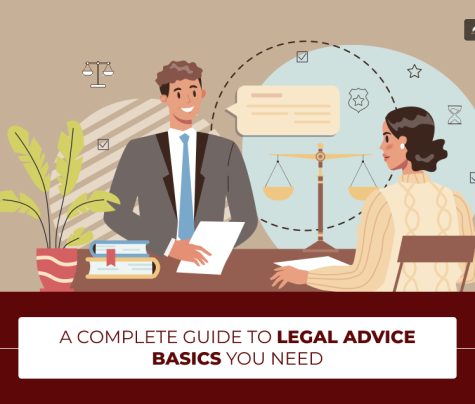
Navigating the auto insurance world can sometimes feel like trying to understand a foreign language.
Yet, having the right insurance coverage is crucial for every driver. It meets legal requirements and provides financial protection in case of accidents, theft, or other damages to your vehicle.
Understanding the essential types of auto insurance coverage helps you make informed decisions about your policy, ensuring you’re well-protected on the road. Let’s break down the key coverages you should know about.
Understanding the Basics

Auto insurance covers various risks associated with driving and owning a vehicle. From covering costs for repairs due to an accident to providing liability coverage if you’re at fault, different types of insurance cater to different needs.
It’s also important to note that each state has its minimum coverage requirements, for example, drivers must have specific amounts of liability insurance to legally operate a vehicle.
Liability Coverage
Liability coverage is mandatory in most states, including Arizona. It covers damages to other people’s property and injuries if you’re at fault in an accident. This is the foundation of any auto insurance policy. Having adequate liability coverage is crucial to avoid out-of-pocket expenses arising from costly lawsuits.
Collision Coverage
Collision coverage pays for repairs to your vehicle after an accident, regardless of who’s at fault. It’s essential for protecting your investment in your vehicle. Choosing a deductible that balances your premium costs with your financial security can optimize this coverage.
Comprehensive Coverage
Comprehensive coverage protects against non-collision events like theft, vandalism, or natural disasters. It’s a critical component for complete vehicle protection, ensuring that you’re prepared for unpredictable incidents that can occur without warning.
Uninsured/Underinsured Motorist Coverage
This coverage protects you if you’re in an accident with someone who doesn’t have enough insurance or any at all. Given the number of uninsured drivers on the road, it’s an important safety net. It also covers hit-and-run incidents, providing peace of mind in the face of irresponsible drivers.
Minimum Coverage Requirements in Arizona
Bodily Injury Liability
In Arizona, drivers must carry minimum bodily injury liability coverage. This ensures you can cover medical costs for others injured in an accident you cause. Meeting this requirement is not just about legality but financial responsibility and protection from significant out-of-pocket expenses.
Property Damage Liability
Property damage liability is another requirement in Arizona. This covers damage you may cause to another person’s property during an accident. Carrying enough coverage is vital to safeguard against the high costs associated with vehicle and property repairs.
Personal Injury Protection (PIP)
While not required in Arizona, Personal Injury Protection can cover medical expenses for you and your passengers regardless of who is at fault. Opting for PIP can provide extra financial security after an accident, covering potential medical bills and lost wages.
Additional Coverage Options
Arizona drivers might consider gap insurance, rental reimbursement, or emergency road service coverage for more comprehensive protection. Exploring these options can ensure you’re well-prepared for various scenarios, from car theft to breakdowns.
The Importance of Adequate Coverage
Protecting Your Financial Well-being
Adequate auto insurance coverage can protect you from significant financial loss in the event of an accident. It’s crucial to assess your personal needs and risk tolerance when choosing your coverage levels. This strategic approach helps ensure that you’re not overpaying for insurance while still being protected against major expenses.
Meeting Legal Requirements
Carrying the minimum required insurance is not just about protection—it’s also about complying with state laws. Failing to meet these requirements can result in fines and legal penalties. Moreover, being adequately insured helps avoid the suspension of your driving privileges.
Peace of Mind
Knowing you have the right coverage provides peace of mind on the road. It lets you focus on driving safely, knowing you’re protected against unforeseen circumstances. This confidence can make your driving experience more enjoyable and less stressful.
Factors Influencing Your Coverage Needs
Your coverage needs may vary based on your vehicle, driving habits, and financial situation. It’s essential to review and adjust your coverage regularly to accommodate life changes. Staying proactive about your insurance coverage ensures it evolves with your changing needs, offering optimal protection at all times.
Choosing the Right Auto Insurance Policy

Assessing Your Needs
Understanding your driving habits, vehicle value, and financial security can help determine coverage levels. Consider your daily commute, vehicle age, and if you often carry passengers. Regularly re-evaluating these factors as they change over time ensures your insurance coverage continues to meet your needs effectively.
Comparing Quotes
Shopping around and comparing quotes from different insurers can help you find the best coverage at the most affordable price. Be sure to compare similar coverage options for an accurate assessment. Utilizing online comparison tools can simplify this process, making viewing a range of options side by side easier.
Reading the Fine Print
Understanding the details of your policy, including exclusions and limits, is crucial. Ensure you know exactly what’s covered and what isn’t to avoid surprises in the event of a claim. Asking questions about anything unclear can prevent misunderstandings and ensure you’re fully informed about your coverage.
Consulting with an Insurance Agent
An experienced insurance agent can provide personalized advice based on your specific needs. They can help you navigate the complexities of auto insurance and find the best policy for you. Their expertise can also be invaluable in identifying discounts or policy bundles that could save you money while maximizing coverage.
After an Accident: Filing a Claim
Immediate Steps
Knowing what to do immediately after an accident can help streamline the claims process. This includes gathering evidence at the scene and reporting the incident to your insurer as soon as possible. Quick action facilitates your claim and helps preserve crucial details that might be forgotten over time.
The Claims Process
Understanding the claims process can help you navigate it more effectively. Your insurer will guide you through the steps, from assessment to repair or compensation. Familiarizing yourself with your policy details can expedite this process and ensure you’re fully aware of your entitlements.
Working with Claims Adjusters
Claims adjusters will evaluate the damage to determine the payout. Being prepared with thorough documentation can help ensure a fair assessment. Effective communication with your adjuster is key to addressing any concerns and clarifying the scope of your coverage.
Resolving Disputes
If you disagree with the insurance company’s decision, know your rights and the steps you can take to dispute the claim. This might include mediation, arbitration, or legal action. Seeking the assistance of a legal professional can provide the leverage needed to negotiate a more favorable outcome.
Understanding the essential types of auto insurance coverage and the minimum coverage requirements in Arizona is crucial for all drivers. By choosing the right policy, you ensure that you’re meeting legal requirements and protecting your financial well-being and peace of mind.
Regularly reviewing your insurance needs and consulting with professionals can help you maintain adequate coverage that matches your evolving lifestyle and driving habits.
Read Also:
- The Impact Of Personal Injury Lawsuits In Temecula: A Lawyer’s Analysis
- Difference Between Bail Vs Bond? Everything You Should Know
- How Much Does Car Insurance Go Up After An Accident?











0 Reply
No comments yet.